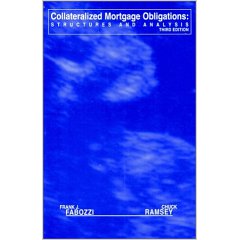The fun is tranching pools of mortgages into different securities.
You take a package of mortgages, preferably from different areas
of the country, and then you create different tranches with
different credit qualities, and then one zero coupon that bears
all the residual risk.
The first tranch, naturally, gets all the guarenteed income stream
(mortgage payments) and bears *no* (or actaully, very little)
prepayment risk (it is good to maturity).
The next tranch gets income stream, and bears some prepayment
risk (if there are a lot of prepayments, it gets a swath if the other
tranches are fully repaid), and on down the line.
The last tranch before the zero gets income, but bears risk
if the income falls short (mortgages default), and also bears
*the most* risk for prepayment (it has a call option owned
by the mortgage holders, they can repay the loan if the
interest rate changes). If you own this last tranch, you have
lots of duration and gamma risk, whereas if you own the
first tranch you have a very different profile.
The 'residual zero' tranch is practically binary.
Either it pays off, or it defaults and gets the (last) bit of
recovery value in liquidation. Lots of folks use equity
models to calculate expected return on these.
Freddie and Fannie do this, but also Morgan Stanley and Goldman.
If you want to play, you can call them and they can cobble toghether
a structured deal that will match pretty much any flavor you want.
Some of their customers are developers who are highly exposed
to one geographic area (say, Toll Brothers) and need hedging.
A good intro book is Collateralized Mortgage Obligations
by Chuck Ramsey and Frank Fabozzi. It goes beyond CMOs and
talks about a lot of the risk horizons and what traders of these
do and play with. Lots of former interest rate traders apparently
do well in this field.

As far as point three: you are talking 'real options' theory here,
and you have to look for a lot of asset value delta to overcome
the (identified) barriers to exit and entry and transactions costs.
I have yet to see a good book on the real options of real estate,
but the ones that come close deal with mineral rights and land
and mostly were developed for energy exploration. Not really
'commercial' or 'residential' real options.
Continue reading "Tranched mortgage pools" »
